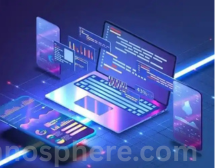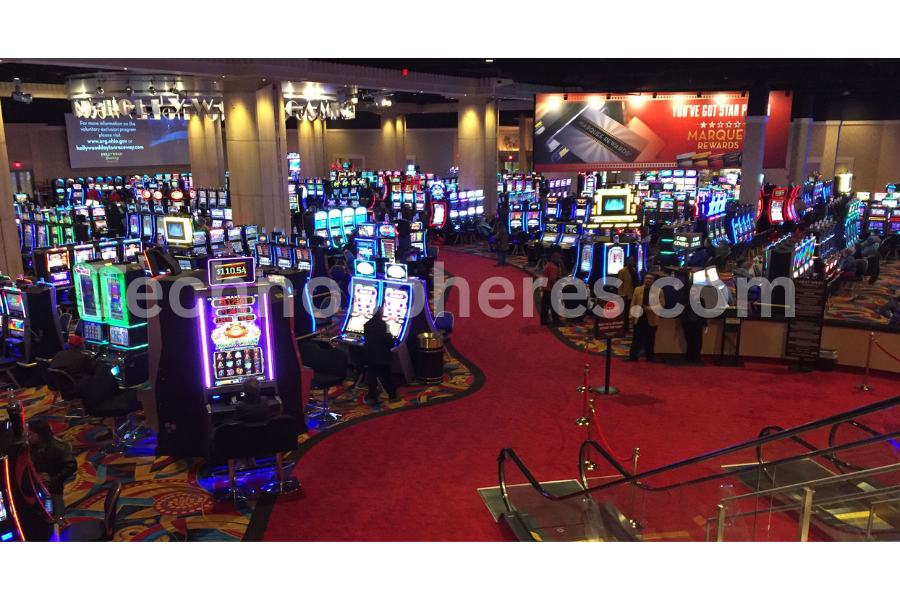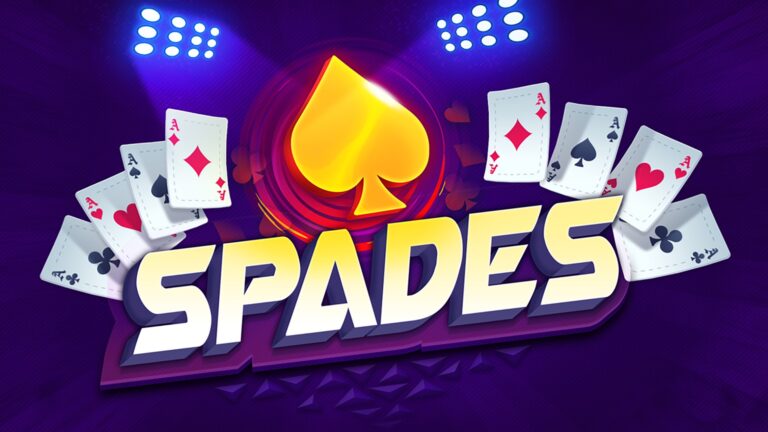
United Gaming net
How to Optimize Gaming PC for Streaming on Twitch, YouTube, or Facebook Gaming, streaming games or content online has become quite well-known lately. Both your hardware and software have to be well refined to produce a seamless and professional-quality stream. From tweaking your system for best performance to gaining hardware demands, this guide addresses all facets of PC streaming optimization.
Significance of How to Optimize Gaming PC for Streaming
Streaming is a challenging job that combines real-time video encoding with game play. Improper optimization could result in dropped frames, lag, and subpar stream quality.
- Good gaming and streaming performance
- Improved viewer video quality
- Little crashes or slowdowns
- Efficient application of system resources
Overview of streaming requests for a gaming PC
Running the game itself, which heavily uses the GPU and CPU.
Encoding and sending the video stream—x264 for CPU, NVENC/AMD VCE for GPU—also strains the CPU or GPU relying on the encoder.
Knowing streaming needs
Prior to optimization, you should first grasp what’s needed for streaming:
- Higher resolution (1080p or 4K) and higher bitrate (5,000+ kbps) call for more resources.
- 30 FPS streaming uses less processing capability than 60 FPS.
- Streaming programs OBS Studio, Streamlabs, XSplit, etc. all throw different amounts of resources.
- Streaming service: Facebook, Twitch, and YouTube all have somewhat different encoding norms and upper bitrate.
Important hardware requirements: CPU, GPU, RAM, storage
- CPU: Essential for encoding if x264 and for game logic. More threads or cores equal more multitasking.
- GPU: Essential for hardware encoding (NVENC, AMD VCE) and rendering game graphics.
- RAM guarantees seamless multitasking. For heavy streamers, 32GB—16GB—a foundation—would be appropriate.
- Storage: Quick data access and loading times. Especially for games and video file management, SSDs far exceed HDDs.
Streaming platform software requirements
Software:
- Open source, very configurable OBS Studio.
- Streamlabs: More resource-intensive yet user-friendly.
- XSplit is paid but has professional capabilities.
Services:
- Twitch, most popular, has ceiling on bitrate.
- YouTube lets more resolutions and bitrates.
- Facebook Gaming: Emerging platform with excellent discoverability.
- Hardware Enhancement
CPU:
- Selecting and Setting for Multi-tasking
- Recommended CPUs have at least 6–8 cores: AMD Ryzen 7/9, Intel i7/i9.
- Multithreading is a must for managing game plus streaming software concurrently.
- Enable Game Mode (Windows).
- Set OBS’s process priority.
Suggestions:
- Limitate in-game frame rates to prevent GPU overload.
- If encoding turns too demanding, utilize dual-PC configurations.
- RAM: Perfect Speed and Capacity
- For multitasking (streaming, gaming, browser, Discord), minimum 16GB is required; 32GB is desirable.
- Speed: Faster RAM (3000MHz+) helps Ryzen CPUs in particular to improve their general performance.
- Better bandwidth comes from always using RAM in dual channel.
- Storage: Game and Stream Performance SSD versus HDD

Solid-state drive (SSD):
- Load times for games quicker
- Stutter during gameplay is helped to be reduced.
- Recommended for OS, games, and streaming assets
- Hard disk drive, or HDD, is
- Good for keeping big video files
- Use only for secondary storage.
Liquid Cooling, Fans, and Airflow: Cooling Methods
- Effective for most users; however, make sure there is good airflow around the case.
- Liquid cooling offers improved thermal performance for quiet builds or overclocking.
- Case fans should have intake (front/bottom) and exhaust (rear-top) configuration.
- To stop thermal throttling, control temperatures.
Internet Link: Wireless vs. Wired, Upload Speed Needs
- For stability and low latency, wired Ethernet is highly suggested.
- For 1080p @ 60 FPS, minimum 6 Mbps upload speed Better is more.
- 720p at 60 frames per second: 3–4 Mbps
- 1080p at 60 frames per second: 6–8 Mbps
- 1440p or 4K: 10–20+ Mbps
- Avoid Wi-Fi save for high-end routers and a consistent 5GHz band.
Disabling Unnecessary Startup Programs
Trays and update apps
- Cloud sync services during stream ( OneDrive, Google Drive )
- Reduces RAM and CPU use and accelerates boot time.
- Changing power settings for performance
- On desktops, set Windows Power Plan to Ultimate Performance or High Performance.
- Prevents CPU throttling and lets the system run continually at full power.
Windows Gaming and Streaming Adjustments
- Enable it to give gaming activities top priority.
- Hardware-accelerated GPU scheduling might lower latency (test performance impact).
- Background apps: Turn off in Windows configuration under Privacy > Background apps.
- Set GPU preference for streaming software to “High performance”.
Maximizing Resources and Scenes
- Limit sources: Save resources by turning off scenes and sources not in use.
- Use media files and browser sources judiciously; they might use CPU.
- One should minimize animation use and compress pictures.
- Set appropriate resolution for camera feeds: Avoid streaming a 1080p webcam if all you’re showing it is in a little box.
Streaming game optimization
Games ought to be maximized to leave resources for the stream encoder and perform well. Modifications of in-game settings for equal performance
- Shadow quality
- Anti-aliasing
- Post-processing
- Motion blur (usually irrelevant)
- View distance moderate depending on game
Frame rate capping and V-sink issues
- To lower CPU/GPU load and remove stuttering, set FPS somewhat below monitor refresh rate (e.g., 58 for 60Hz).
- Can assist with screen tearing but brings in input lag.
- If possible, use G-Sync or Free Sync to help your gameplay flow.
Running games in borderless windowed mode
Advantages:
- Faster alt-tabbing between OBS and game
- Maintains responsive overlays and alerts.
- Better suitable for multi-monitor configurations
Disadvantage:
Slightly increased input latency relative to full-screen exclusive mode
Performance Tools and Monitoring
- Watching system and stream performance allows you to troubleshoot and maximize immediately.
- Performance monitoring in real time (MSI Afterburner, Task Manager, etc.)
- MSI Afterburner tracks GPU, CPU, RAM, temperature, and FPS in live usage.
- Find resource hogs using

Go to Stats in OBS Studio:
- Generated by upload bandwidth constraints: dropped frames (network).
- Skipped frames—encoding lag—result from CPU/GPU not keeping up with encoding.
- Render lag is caused by GPU overload while rendering.
- Adjust bitrate, resolution, or encoder as live stream monitoring calls for.
Audio Optimization
Microphone Setup and Noise Suppression
- Your stream’s professionalism is increased by a clear, crisp microphone.
- With a pop filter, maintain 6 to 12 inches from your mouth.
- Apply Noise Suppression, Noise Gate, and Compressor on OBS filters.
- Background noise is eliminated by programs like RTX Voice (NVIDIA) or Krisp.ai.
- Use a Focus rite Scarlett interface for XLR mics.
- Good choices for USB mics are Blue Yeti, Elgato Wave, or HyperX Quad cast.
Managing Resources and Multitasking
Turn off overlays:
- Steam, NVIDIA GeForce Experience, and Discord—all three can consume CPU/GPU cycles.
- Cut background monitoring tool or dashboard widgets.
- Dual monitor or ultrawide configuration refinement
Dual monitors:
- One for gameplay, the other for OBS chat, alerts, and controls.
- If feasible, match refresh rate and resolution.
- Game in 21:9; stream in 16:9 (crop view in OBS)
- Make HUD/UI fit within the stream viewable area’s requirements.
Live Stream Resource Management Efficiency
- Set process priority to “High” or “Above Normal”.
- Hardware encoding (NVENC) reduces CPU workload.
- Employ game-specific profiles: Establish various streaming parameters for demanding games.
- Streaming using a two-PC configuration (optional)
Advantages of dual-PC streaming
- Game PC handles solely the game.
- Streaming PC encodes and distributes everything.
Outcome:
- Better quality stream with no effect on game performance
- Hardware needs and capture card specifications
- Elgato HD60 X, Aver Media Live Gamer, or another similar Capture Card
- Link HDMI out from Game PC to Capture Card in Stream PC.
- Streaming PC using NVENC requires either a Ryzen 5/i5+ strong CPU or a fair GPU.

Network and Audio Setup
- Network: Between computers, utilize a local gigabit Ethernet connection.
- Audio directing: For distributing game audio, use Optical out, USB audio interfaces, or Voicemeter Banana.
If necessary, send mic audio from streaming PC to game PC via monitoring.
Typical Problems and Troubleshooting
Lag, stutter, and dropouts
- CPU/GGPU overload
- Upload speed too low.
- Incorrectly configured encoder settings.
Reduced resolution or frames per second
- Use NVENC rather than x264.
- Limit in-game frame rate.
- Background app closure.
Throttling and Overheating
- Symptoms include abrupt performance drops, stuttering, and shutdowns.
- Check temperatures (MSI Afterburner).
- Enhance cooling and airflow.
- Clean fans and dust filters
- Reapply thermal paste should it be required.
Stream Quality vs Performance Balance
Important trade-off:
- Higher quality means extra resources.
- Improved performance equals somewhat lower visual fidelity.
- Recommended sweet areas:
- For mid-range systems, use 720p60 or 1080p30.
Best Guidelines for Long-Term Streaming Performance
Streaming is more about keeping that setup over time than it is about having a great one. Key qualities are consistency, dependability, and responsiveness.
Frequent Cleaning and Maintenance
- Dust and wear can impair performance or lead to hardware breakdown over time.
- Every one to two months, use compressed air to dust out your PC.
- Rear vents and fan filters to guarantee right airflow clean.
- Watch temperatures to spot early indicators of overheating.
- Uninstall games and apps you never use.
- Regularly clear temp files using Disk Cleanup or Cleaner-type programs.
- Using programs like Malwarebytes, check for malware or background bloat.
Concluding How to Optimize Gaming PC for Streaming
Here’s a wrap-up of a How to Optimize Gaming PC for Streaming and some final advice to keep your streaming career stable and growing. Adopt powerful CPU/GGPU pairings and ensure good cooling and air movement. For operating systems, games, and quick loading, use SSDs. Perfect OBS/Stream labs adjustments for balance. Select suitable bitrate, resolution, frames per second. Also use hardware encoding if it is practical. Buy a decent microphone with filters and mixing tools. Carefully balance audio sources. Use wired internet with at least 5–10 Mbps upload. Turn off extra apps. Change the settings for power and performance.
Last advice for How to Optimize Gaming PC for Streaming and spectator experience. Quality is as valued as involvement; regularly interact with your chat. Creating audiences requires consistency: One should adhere to a streaming timetable. Use alerts and overlays sparingly; you don’t want to clog your stream. Audio outweighs video: Viewers can’t stand bad audio but can accept low video quality. Fine-tuning results from test recordings or secluded streams prior to going live. Encourage viewers to note audio or video problems. Track system resource usage. Regularly clean and update hardware and software. Backup profiles and stream overlays.
Read more about Gaming on Technospheres.






